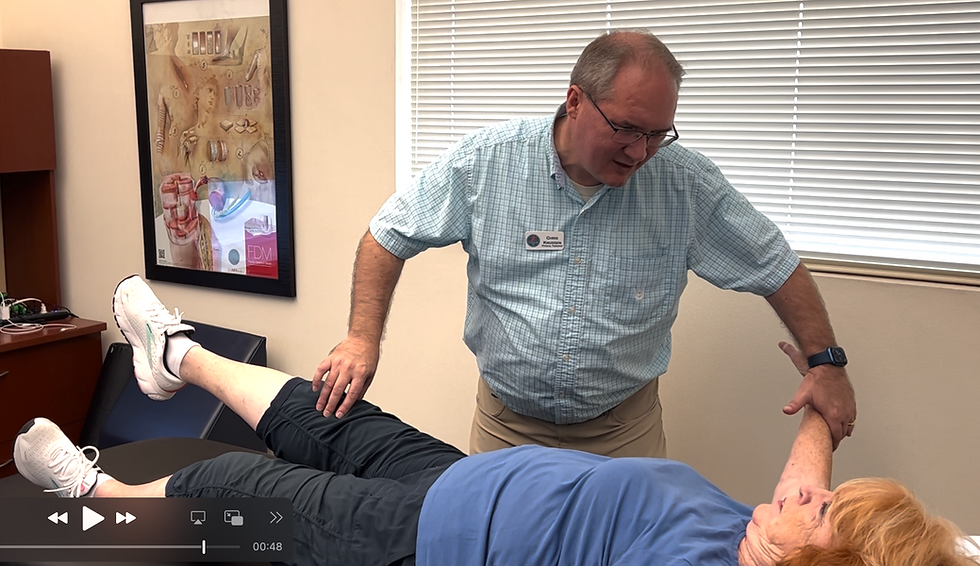Manual Muscle Testing (MMT) Is Reflex Testing
- muscleiq2
- Oct 28, 2023
- 2 min read
At Muscle IQ Physical Therapy, we use techniques that are not common in most physical therapy clinics. We use manual muscle testing (MMT) as a way to identify where to treat. This might sound strange, since MMT is usually only used to help document muscle weakness. What is not widely understood is that muscle weakness found during manual muscle testing can be due to a loss of the Myotatic reflex (stretch reflex), and/or due to stimulation of the Autogenic Inhibition reflex, and that once you find a weak muscle you can use manual muscle testing to find where to treat in order to fix that muscle weakness.
When a therapist pushes on the patient to test the strength of a muscle, the muscle cannot respond quickly or solidly if the myotatic reflex is turned off or if the autogenic inhibition reflex is turned on.
An article from the National Institutes of Health describes the Myotatic reflex in this way: “The stretch reflex or myotatic reflex refers to the contraction of a muscle in response to its passive stretching. When a muscle is stretched, the stretch reflex regulates the length of the muscle automatically by increasing its contractility as long as the stretch is within the physiological limits. When a muscle lengthens, the muscle spindle located inside the muscle is stretched, and the rate of neural firing of muscle spindle afferents increases. This augments alpha motor neuron activity in the anterior horn cell pool, causing the muscle fibers to contract and therefore resist the stretching.” (https://www.ncbi.nlm.nih.gov/pmc/articles/PMC5341261/#:~:text=Introduction-,The%20stretch%20reflex%20or%20myotatic%20reflex%20refers%20to%20the%20contraction,is%20within%20the%20physiological%20limits.)
When the stretch reflex is on, the patient's muscle will resist quickly and solidly during MMT.
Weak MMT scores are what we see when the stretch reflex is turned off.
1. So, first we find a weak muscle, in this case, a weak right leg flexion weakness:

2. Next we find a strong test limb, in this case a strong right arm abduction.

3. Third, we see the right arm abduction become weak, after engaging the week right leg flexion.

4. And last, we palpate to find the tissues responsible for the right leg flexion weakness, in this case the area medially to the right patella.

The weak muscle in the right leg is weak because of reflexes. How do I know? Because after treating the suspect area the leg weakness was gone. The manual muscle test of the right leg flexion motion was strong.
What was the actual cause of the right leg muscle weakness? It was thickened, stiff fascia on the medial aspect of the right knee, causing a reflexive muscle inhibition, or reflexive weakening of the muscle.
Try this technique on your patients and tell me what you find!
Learn more about this technique at www.MuscleIQ.com and on YouTube at https://youtu.be/bi1ZdjvlLGs?si=4fLl5z63SvWoh4P1





Comments